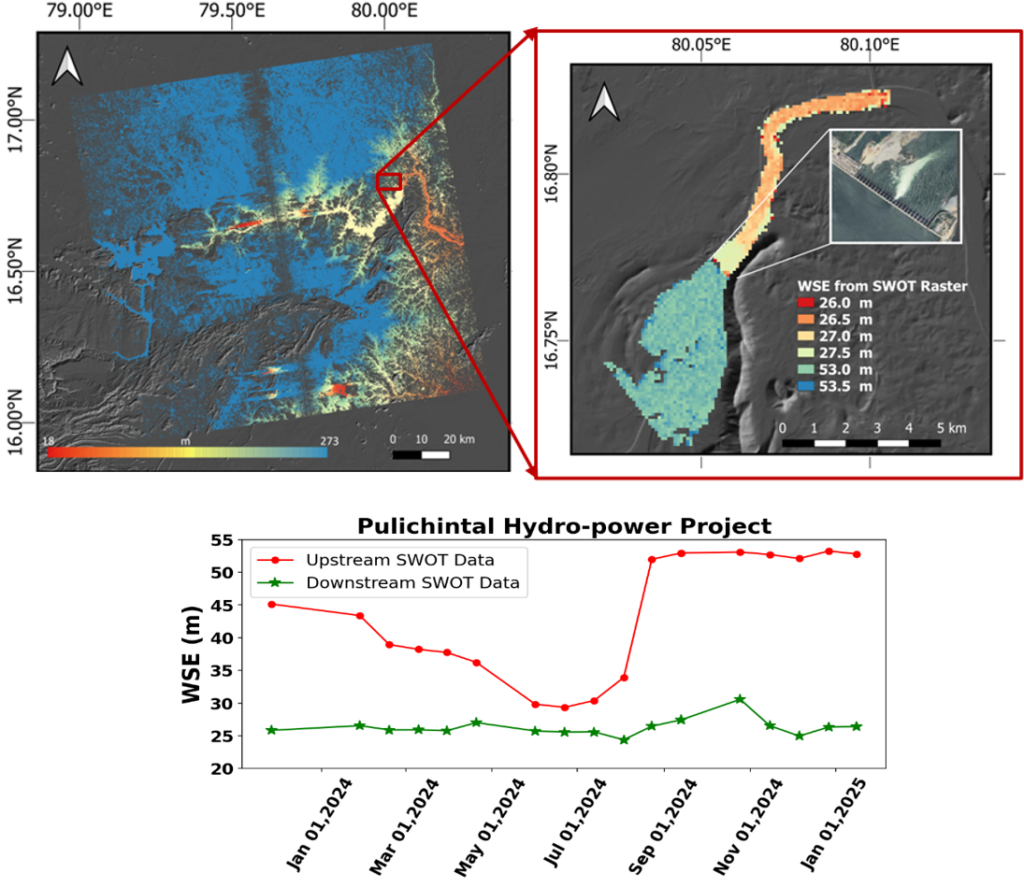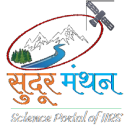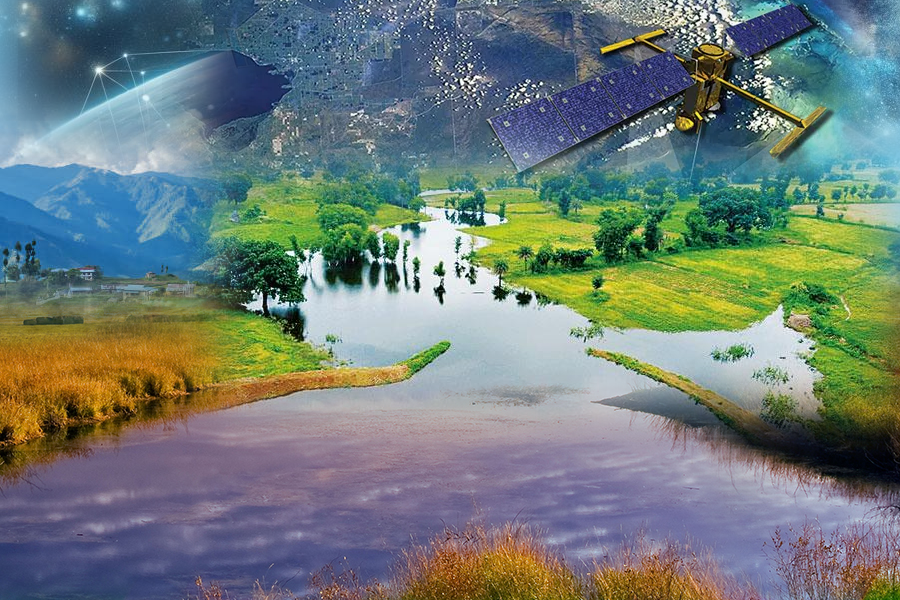Kartikeya Gaur, Pankaj R. Dhote and Praveen K. Thakur
Inland water bodies play a crucial role in sustaining ecosystems, supporting agriculture, and regulating hydrological processes. Continuous monitoring of water levels is essential for effective water resource management and risk assessment, particularly in regions where ground-based observations are sparse. Traditional satellite altimeter missions have provided valuable insights into water storage and flow dynamics, but their non-imaging configuration and spatial coverage limitations have left gaps in understanding smaller rivers, reservoirs, and glacial lakes. The Surface Water and Ocean Topography (SWOT) mission bridges this gap by offering two dimensional (2D) high-resolution measurements of water surface elevations (WSE), river widths, and slopes on global scale allowing for more accurate assessments of hydrological changes, including estimates of river flow and lake/reservoir storage changes.

Figure 1. SWOT-derived 2D WSE over Pulichintala multi-purpose water management project and temporal variability of WSE at upstream and downstream locations.
The SWOT mission represents a major advancement in global hydrology by providing detailed, 2D water height data across various inland water bodies. This capability enhances hydrological models by improving the estimation of river discharge, water storage changes, and fluxes within the water cycle. As an example in figure 1, we illustrate water level variations upstream (U/S) and downstream (D/S) of the Pulichintala Hydro-Power Project on the Krishna River, located along the border of Telangana and Andhra Pradesh. The time series analysis reveals that water levels peak during the monsoon months and gradually decline as water is diverted for irrigation and other uses.
The integration of SWOT observations with in-situ measurements and other satellite datasets will refine our understanding of surface-subsurface water interactions and the effects of climate change on hydrological systems. Furthermore, SWOT’s data can contribute to broader Earth system studies, including research on greenhouse gas emissions from inland waters, ultimately improving climate models and informing sustainable water management strategies.
References
- Biancamaria, S., Lettenmaier, D. P., & Pavelsky, T. M. (2016). The SWOT Mission and Its Capabilities for Land Hydrology. Surveys in Geophysics. https://doi.org/10.1007/s10712-015-9346-y
- Dhote, P.R., Agarwal, A., Singhal, G., Calmant, S., Thakur, P.K., Oubanas, H., Paris, A., Singh R.P. 2024.River Water Level and Water Surface Slope Measurement From Spaceborne Radar and LiDAR Altimetry: Evaluation and Implications for Hydrological Studies in the Ganga River. IEEE Journal of Selected Topics in Applied Earth Observations and Remote Sensing, vol. 17, pp. 7825-7840, 2024, https://doi.org/10.1109/jstars.2024.3379874 .
- Durand, Michael, Gleason, C. J., Pavelsky, T. M., Prata de Moraes Frasson, R., Turmon, M., David, C. H., et al. (2023). A Framework for Estimating Global River Discharge From the Surface Water and Ocean Topography Satellite Mission. Water Resources Research, 59(4). https://doi.org/10.1029/2021WR031614
- Getirana, A., Kumar, S., Bates, P. et al. The SWOT mission will reshape our understanding of the global terrestrial water cycle. Nat Water 2, 1139–1142 (2024). https://doi.org/10.1038/s44221-024-00352-0




The article provides valuable insights into how satellite-based wide-swath altimetry, particularly the SWOT mission, enhances monitoring of inland water bodies. It clearly explains the limitations of traditional altimetry and how SWOT’s 2D high-resolution data overcomes those challenges. The case study of the Pulichintala Hydro-Power Project effectively illustrates the practical application of this technology. Integration with in-situ data and other satellite observations is a promising step toward more accurate hydrological modeling. Overall, the article highlights the importance of SWOT in advancing water resource management and climate research. How one can use this techniques for study water bodies in concern interest of area?
Dr. Reena Popawala
April 16, 2025
How will the model ensure minimum river e-flow to sustain the ecology and aquatic diversity of the system
Dr. Deepa Gavali
April 16, 2025
Thanks for your valuable comments. Any registered user can download the data level-1, level-2 data from NASA, POSDAC website. SWOT data is available since December 2022. We shall host a brief report on this portal, so that all user can better understand and utilize the SWOT and other space based altimeter datasets. https://podaac.jpl.nasa.gov/SWOT?tab=mission-objectives§ions=about%2Bdata With Regard to e-flow, now we have capability to monitor water level, water extent and in near future river discharge and volume change in all water bodies, which are covered by SWOT database. This can be used to estimate the low to high flows, however, the minimum e-flow that can be maintained in a river is governed by multiple factors, SWOT can only provide the observation support of water elevation and discharge at 21 day interval.
Praveen K Thakur
April 16, 2025